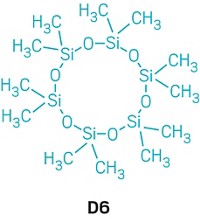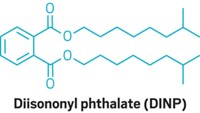Advertisement
Grab your lab coat. Let's get started
Welcome!
Welcome!
Create an account below to get 6 C&EN articles per month, receive newsletters and more - all free.
It seems this is your first time logging in online. Please enter the following information to continue.
As an ACS member you automatically get access to this site. All we need is few more details to create your reading experience.
Not you? Sign in with a different account.
Not you? Sign in with a different account.
ERROR 1
ERROR 1
ERROR 2
ERROR 2
ERROR 2
ERROR 2
ERROR 2
Password and Confirm password must match.
If you have an ACS member number, please enter it here so we can link this account to your membership. (optional)
ERROR 2
ACS values your privacy. By submitting your information, you are gaining access to C&EN and subscribing to our weekly newsletter. We use the information you provide to make your reading experience better, and we will never sell your data to third party members.
Chemical Regulation
Harmful compounds lurk in childcare products, EU report says
Toxic metals, carcinogens found in car seats and changing pads
by Leigh Krietsch Boerner
November 16, 2023

Harmful compounds are present in products that kids are exposed to often, including car seats, bibs, and changing pads, according to a report from the European Chemicals Agency (ECHA). The substances, which include flame retardants, metals, and phthalates, are known to cause cancer, genetic mutations, or reproductive harm.
ECHA scientists collected over 1,500 measurements of childcare products to test for 182 compounds known as CMRs because they are carcinogenic, mutagenic, or toxic for reproduction. They found multiple potentially harmful compounds in concentrations above the European Union’s limits. These include vinyl chloride, lead, cobalt, diisobutyl phthalate, di-n-butyl phthalate, di-(2-ethylhexyl)phthalate, and the flame retardants tetrabromobisphenol A and tris(2-chloroethyl)phosphate.
In other cases, the compounds themselves were not directly detected but were instead suspected. “They may be present in materials that are used for the production of childcare articles,” says Ulrike Reuter, a toxicologist at the ECHA. For example, vinyl chloride is used as a monomer for polyvinyl chloride, she says, and it’s possible that some vinyl chloride could be left in the polyvinyl chloride used to make a product such as a changing pad.
“Our recommendation to parents would be to buy from well-recognized manufacturers of childcare articles,” Reuter says. In addition, parents should be wary of certain older hand-me-down childcare products. “Avoid specifically secondhand plastic articles, because they may contain extremely high concentrations of phthalates,” Reuter says.
Based on past studies, many of the compounds were thought or known to be present in childcare products, but scientists did not know how much. The European Commission, the legislative arm of the European Union, had asked the ECHA to investigate these compounds as a precursor to possible EU restrictions on their use in childcare articles, Reuter says. The European Commission is scheduled to discuss the ECHA findings and potential legislation in early 2024.
Under REACH, the EU’s set of regulations for chemicals, the exposure of people who use the products in question is assumed and does not need to be specifically measured. For the ECHA report, scientists assumed that children could be exposed to harmful compounds in childcare products “during normal and reasonably foreseeable conditions of use,” according to the report.
No such assumption exists under US law. According to Nychelle Fleming, communications specialist at the US Consumer Product Safety Commission (CPSC), the CPSC has restrictions on lead in children’s products and in certain paints and painted furniture. There are also limits on specific phthalates in children’s toys and childcare items, she says in an email. The regulation of other compounds considered CMRs falls under various statutes, including the Federal Hazardous Substances Act. But unlike in the EU, the US law depends on handling or use.
“Thus, the restriction on chemicals in products generally considers the potential for exposure, not just presence of chemicals in a product,” Fleming says.




Join the conversation
Contact the reporter
Submit a Letter to the Editor for publication
Engage with us on Twitter